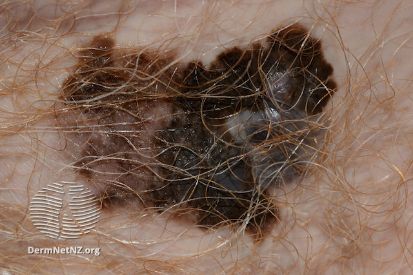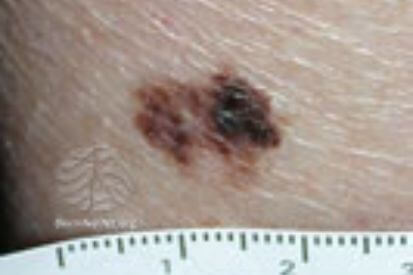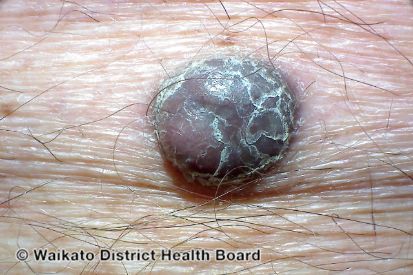Melanoma
Understanding Melanoma: The Most Dangerous Skin Cancer
Melanoma is a particularly dangerous type of skin cancer that originates in melanocytes, the cells responsible for producing melanin, the pigment that gives skin its color. While melanocytes are primarily found in the skin, they can also be present in the eyes, bowel, and other areas of the body. However, the risk of melanoma in these non-skin areas is significantly lower.
Although melanoma is less common than other skin cancers, it is by far the deadliest, accounting for approximately 75% of all skin cancer-related deaths. Each year, around 160,000 new melanoma cases are diagnosed in the U.S. alone, with excessive exposure to ultraviolet (UV) light being a major contributing factor.
Regular skin checks by a dermatologist are essential for detecting melanoma early. Dermatologists have the expertise to identify suspicious moles, lesions, or changes in the skin that could indicate melanoma. Self-exams are equally important, allowing individuals to monitor their skin for any alterations in the shape, size, or color of moles, or the appearance of new spots.
By combining professional dermatological evaluations with regular self-examinations, the likelihood of early detection increases significantly. Early intervention is crucial, as it dramatically improves the chances of successful treatment and outcomes.
Examples of Melanoma



Symptoms of Melanoma
- Melanoma most often presents itself with the change of an existing mole, including change of symmetry, color, or shape.
- Irregular mole borders – scalloped, wavy, or notched.
- Diameter - anything new growing in size.
- Moles that itch, ooze or bleed.
- Melanoma can appear on normal skin tissue and does not always start as a mole.
What Causes Melanoma?
- Melanoma is primarily caused by the uncontrolled growth of pigment-producing cells (melanocytes) in the skin.
- Melanoma is often triggered by exposure to ultraviolet (UV) radiation from sunlight or tanning beds.
- Genetic factors and a history of severe sunburns also contribute to the development of melanoma.
How to Prevent Melanoma
Frequently Asked Questions: Melanoma
The primary cause of melanoma is exposure to ultraviolet (UV) radiation, either from sunlight or tanning beds. Other risk factors include having fair skin, a history of sunburns, numerous moles, a family history of melanoma, and a weakened immune system.
Diagnosis involves a biopsy, where a sample of the suspicious area is removed and examined under a microscope. Dermatologists may use the ABCDE rule (Asymmetry, Border irregularity, Color variations, Diameter larger than 6mm, Evolution or change) to assess whether a mole may be melanoma.
Melanoma is staged from 0 to IV, with stage 0 being melanoma in situ (confined to the top layer of skin) and stage IV indicating the cancer has spread to other organs. Staging helps determine the extent of the disease and guides treatment decisions.
Treatment options for melanoma depend on the stage of the cancer and may include surgical excision, lymph node removal, immunotherapy, targeted therapy, radiation therapy, or chemotherapy. The choice of treatment is individualized based on factors such as the patient's overall health and the characteristics of the melanoma.
From Our QualDerm Family of Providers: Melanoma Treatment Options
Melanoma Treatment Options
We will confirm melanoma through a biopsy and pathological examination and then treat appropriately.
Treatment options for melanoma provided by a dermatologist may include surgical procedures to remove the cancerous tissue, such as excision or Mohs surgery. Additionally, your dermatologist may recommend therapies like immunotherapy, targeted therapy, or chemotherapy, depending on the stage and characteristics of the melanoma. Close monitoring, regular skin checks, and collaboration with other specialists ensure effective treatment and reduce the risk of recurrence.
If you notice unusual growths on your skin as mentioned above, we highly recommend scheduling an appointment with one of our providers. Annual skin checks are essential for early detection.
Early detection and treatment are crucial elements of comprehensive skin cancer care.
Featured Sunscreens

SkinMedica Total Defense & Repair Broad Spectrum Sunscreen
Revolutionary non-tinted superscreen goes beyond UV protection to defend against harmful infrared rays while supporting the skin’s ability to restore itself. Appropriate for all skin types. 65 g / 2.3 oz

ZO® Broad-Spectrum Sunscreen SPF 50
For sensitive and post-procedure skin, this lightweight, non-irritating mineral sunscreen, with ZOX12® complex, protects against damaging effects from UVA/UVB and IR-A rays, and from HEV light. Net Wt. 118 g / 4 Oz
